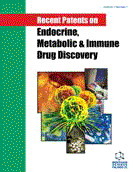Abstract
Mammalian and human cells contain multiple forms of proteasomes different in their structure and functions. 26S-proteasome pool regulates most cellular processes through ATP- and ubiquitin-dependent hydrolysis of proteins participating in these processes. This function is possible due to 19S-subparticle capable to recognize ubiquitinated proteins, unfold and direct them into the proteolytic chamber. 20S-proteasome pool is capable to degrade some damaged and foreign proteins in an ATP- and ubiquitin-independent manner. Among both proteasome pools, the immune proteasomes effectively produce antigen epitopes for MHC class I molecules and play a crucial role in the antitumor immunity. Excluding the immune proteasomes from their cells, numerous tumors avoid the immune system. On the contrary, tumor cells enhance the expression of the housekeeping proteasomes and 19S-subparticle. At this time, bortezomib, a patented proteasome inhibitor, is used as an anticancer therapy. This drug induces the cell cycle arrest and apoptosis of dividing tumor cells. However, bortezomib causes, firstly, deviations in immune functions, secondly, the increase of the housekeeping proteasome expression by a feedback mechanism. Taking into account the recent patents, we consider prospects of the development of new drugs directed to the regulation of the expression of the immune and housekeeping proteasomes and 19S-subparticle in tumor cells.
Keywords: Immune proteasomes, housekeeping proteasomes, 26S-proteasomes, 20S-proteasomes, 19S-subparticle, T cellmediated immunity, lymphoid organs, bortezomib, tumors, anticancer defense
 3
3





















